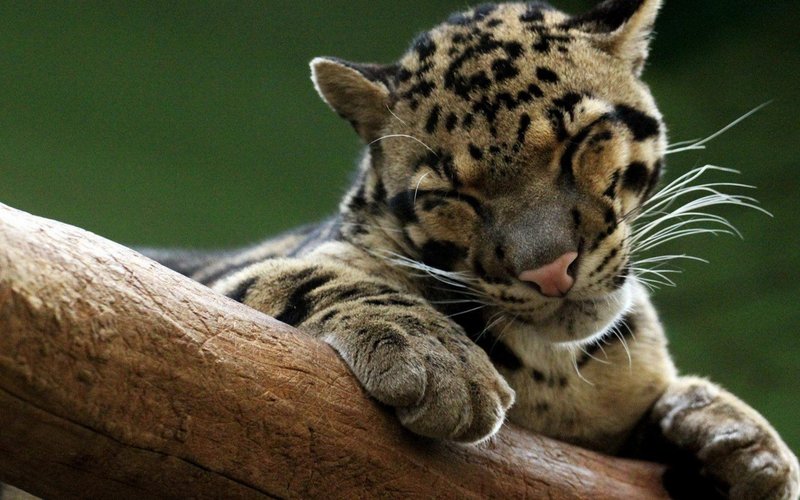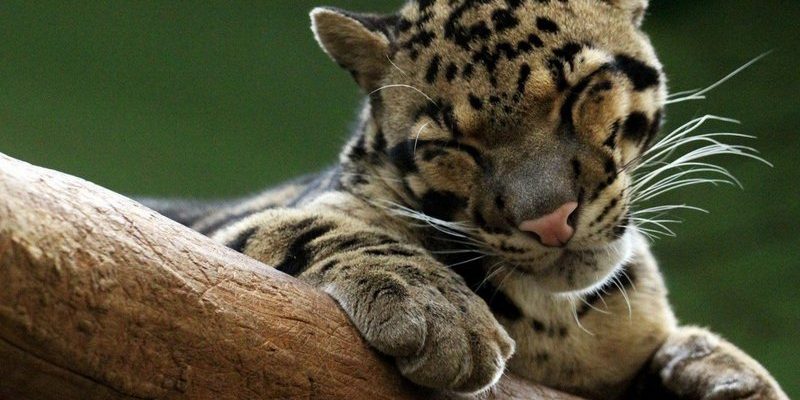
Imagine you’re sipping coffee with a friend, and they start sharing some amazing stories about these big cats. But then they toss out a few inaccuracies that leave you scratching your head. That’s exactly what happens with many discussions about clouded leopards! Let’s clear up some of these common myths and get to the heart of what makes these beautiful animals so fascinating.
The Clouded Leopard: A Big Cat or Just a House Cat in Disguise?
You might be wondering whether the clouded leopard is a true big cat or just a large domestic cat. Here’s the thing: clouded leopards are indeed considered big cats, but they belong to a unique family separate from lions and tigers. They stand out with their distinct size and characteristics.
Clouded leopards are slightly smaller than other big cats, reaching about 30 inches in body length. Unlike your average house cat, their climbing skills are astonishing. They have a unique wrist joint allowing them to climb down trees headfirst, a feature most cats lack. This talent enables them to navigate the tall trees of their forest homes while hunting prey or escaping danger.
So, while clouded leopards might look like oversized house cats at first, they’re definitely much more than that. Think of them as the fascinating cousins in the feline family!
Myth: Clouded Leopards Are Endangered Because They Are Dangerous to Humans
One common misconception is that clouded leopards are endangered because they pose a threat to humans. Honestly, that could not be farther from the truth. These cats are actually quite shy and elusive. They tend to avoid human contact whenever possible.
The main threats they face come from habitat loss and poaching, not aggressiveness towards people. Deforestation is a significant concern, as their lush forest homes are destroyed for timber and agriculture. In addition, they are hunted for their beautiful fur. According to wildlife specialists, educating people about these cats is crucial to their survival—a much less dangerous endeavor than many might think!
If we want to protect clouded leopards, we must focus on preserving their habitat and creating awareness about their true nature.
Myth: Clouded Leopards Are Just a Type of Leopard
You might have heard that clouded leopards are just another kind of leopard, like they’re simply a spicy variation of the ordinary leopard. But here’s the scoop: clouded leopards belong to a different genus entirely! Their scientific name, *Neofelis nebulosa*, distinguishes them from the true leopards of the *Panthera* genus.
What sets clouded leopards apart are their unique physical features and behaviors. For starters, they have larger teeth relative to their body size, which helps them take down prey in their dense forest environments. Their striking coat patterns also lack the rosettes of a typical leopard, having instead that mysterious cloud-like appearance.
So, while clouded leopards share some similarities with their namesake, they have enough distinctive traits to warrant their own category in the feline world.
Myth: Clouded Leopards Are Exclusively Rainforest Animals
It’s easy to assume that clouded leopards only thrive in rainforests because we often see them portrayed against a backdrop of dense greenery. But the truth is, clouded leopards are actually versatile in their habitat preferences. While they are indeed fond of rainforests, they can also be found in other environments, such as dry deciduous forests and scrublands.
This adaptability is one of their survival secrets. They can navigate and hunt effectively in various landscapes. Clouded leopards are medium-sized cats, and their climbing skills allow them to find shelter and prey in different settings. This ability to thrive in multiple habitats showcases their resilience and versatility as a species.
So, while they love the lush canopies, don’t be fooled into thinking they’re stuck in one type of environment!
Myth: Clouded Leopards Are Solitary Creatures
Another popular belief is that clouded leopards are solitary animals that shun others of their kind. While they do enjoy their alone time, these cats are more social than many people realize. They often mark their territory and communicate with other clouded leopards using vocalizations and scent marks.
In the wild, they may come together during mating season, and mothers will rear their cubs in a nurturing environment. The cubs stay with their mothers for an extended period before becoming independent. This period is critical for learning essential hunting skills and survival techniques.
So, although clouded leopards may not be the type to hang out in large packs, they aren’t as solitary as you might think. They value family connections and social interactions too.
Myth: Clouded Leopards Have a Large Population and Are Not at Risk
It’s a common myth that clouded leopards are abundant, but in reality, their numbers are dwindling. Recent estimates suggest there are only between 4,000 and 11,000 clouded leopards left in the wild. This means they are classified as vulnerable, which is not good news for their future.
Habitat destruction and poaching have significantly impacted their population, and conservation efforts are crucial to ensure their survival. Organizations and wildlife agencies are actively working to protect these remarkable creatures through habitat preservation and anti-poaching initiatives.
It’s essential for us to understand that clouded leopards are not thriving in the wild and to support efforts aimed at securing a better future for them. Being aware of their plight is a step in the right direction.
Protecting the Clouded Leopard: Our Role in Conservation
If you’re now thinking about what you can do to help these unique big cats, you’re not alone. Conservation efforts are crucial in protecting clouded leopards and their environments. Small actions at the individual level can add up to significant change.
Here are a few ways you can get involved:
- Support Wildlife Organizations: Many non-profits focus on preserving habitats and protecting endangered species, including clouded leopards. Donating or volunteering can make a difference.
- Spread Awareness: Talking about the myths and facts surrounding clouded leopards can help educate others. The more people know, the better the chances of protecting these cats.
- Choose Sustainable Products: Support companies and industries that prioritize sustainable practices to help combat habitat destruction.
Together, we can help ensure that future generations get to experience the wonders of these beautiful animals. Each of us has a role to play in their conservation!
In closing, clouded leopards are remarkable creatures that deserve our attention and respect. By debunking myths and spreading awareness, we can work towards a brighter future for these enchanting big cats. Their stories are not just tales of survival; they’re also reminders of our responsibility to protect the natural world. Let’s continue to learn about them and advocate for their preservation!

